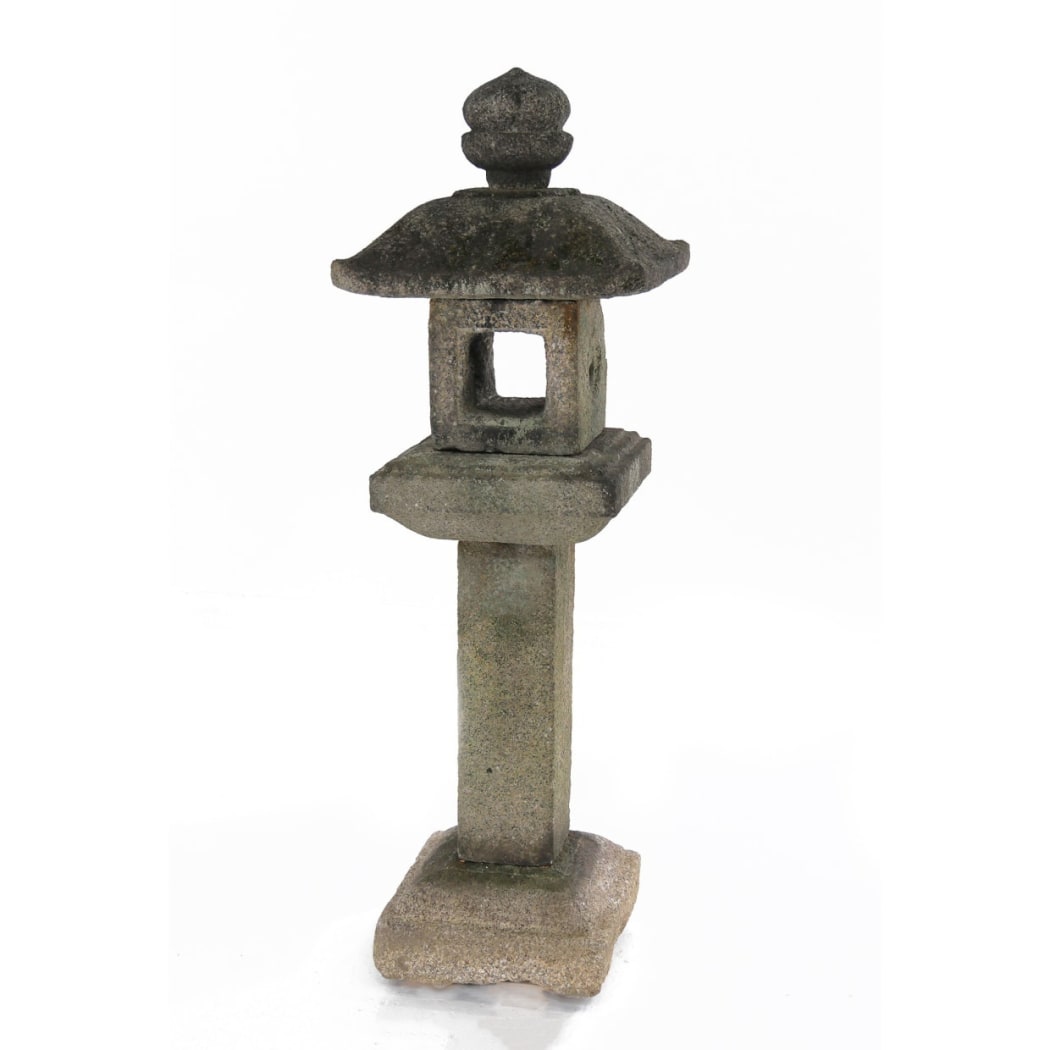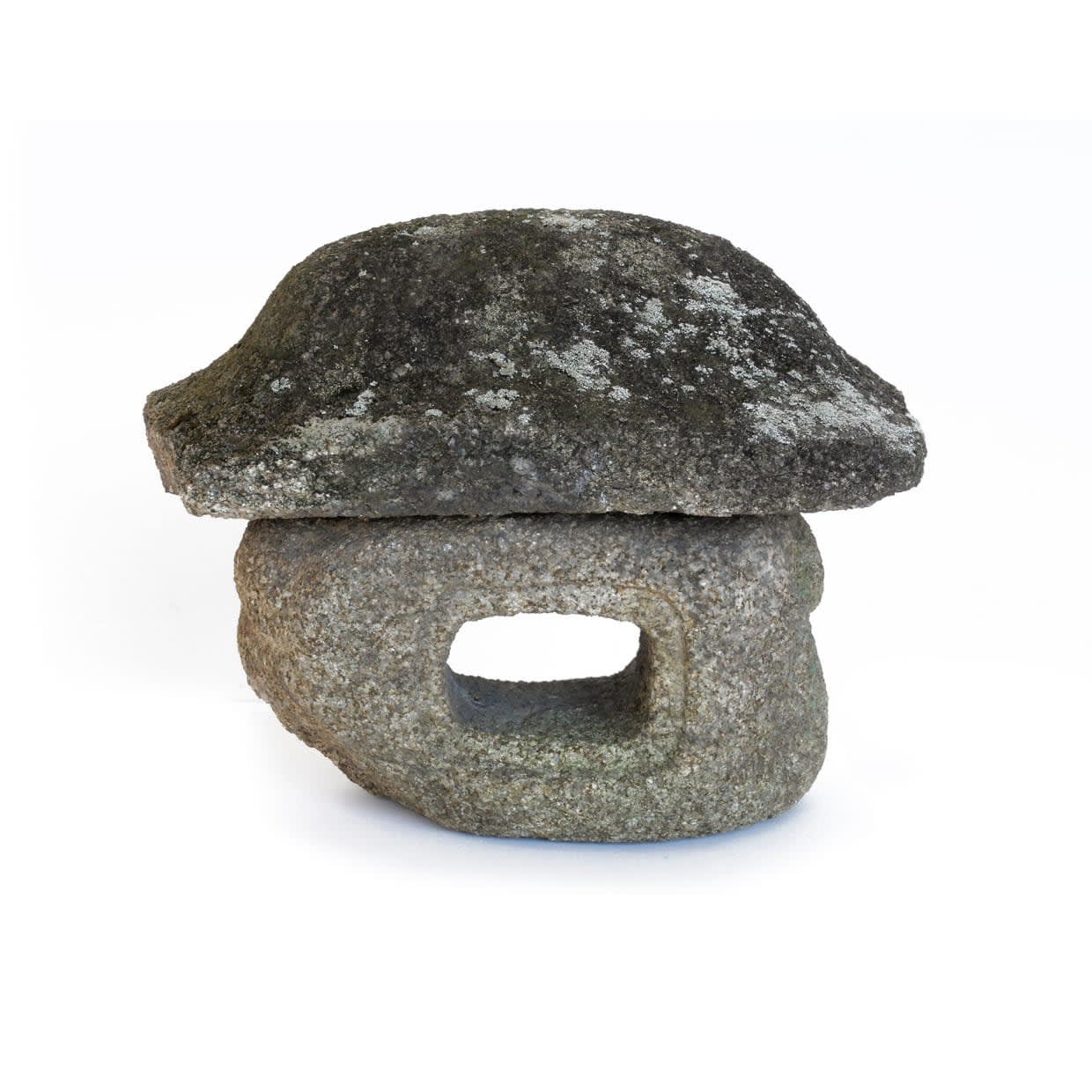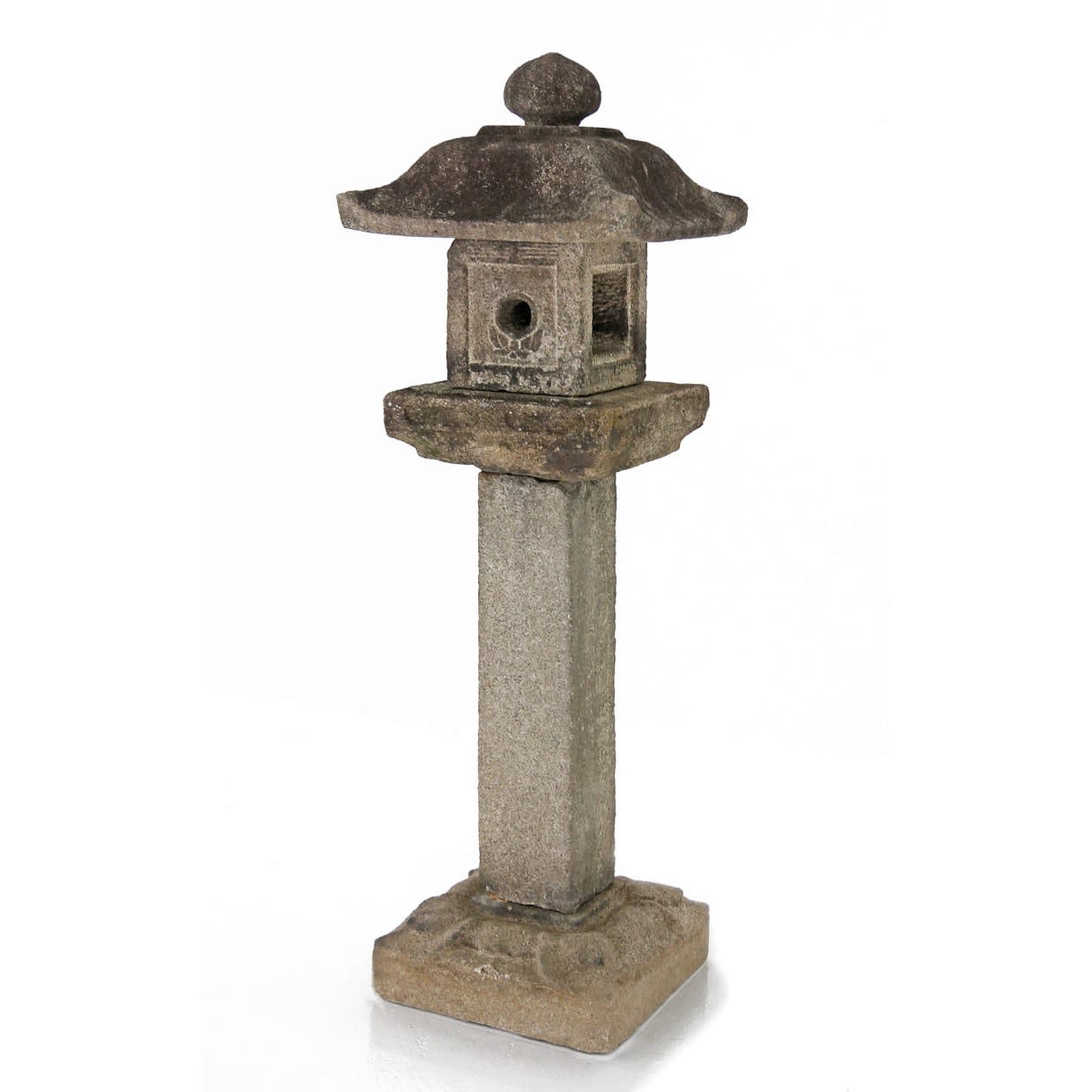
In October of 2019, Mitsui Fine Arts presented excellent stones at an exhibition with Hosfelt Gallery. This writing will discuss the tradition of stone lanterns among the exhibited pieces.
Stones have long been carved into the form of lanterns, made to stand alone and shed gentle light in a garden or temple. In Japan, they fall into two broad categories.
Stone lanterns came to Japan from Korea with Buddhism in the 8th century. Until the Kamakura period (1185–1333), few can be found in Japan, either because few were carved or because those produced did not resist the erosion of time. But soon thereafter, many examples arose, such as the solitary but majestic lantern that stands in front of Byō-dō-in Temple in Uji.
This exemplifies the first kind of stone lantern in Japan: that of the temple or shrine. These kinds of lanterns are traditionally placed on the premises of a temple, illuminating the path towards spiritual space.
As time passed, Ishi-ku (stone artisans) became increasingly adept at carving the body of stones into elegant lantern shapes. Finished with their phase of “copying and learning” the lanterns of Korea by the Kamakura Period , they began producing truly excellent, and more decidedly Japanese, stone lanterns from the Kamakura to Muromachi Period.
With the perfection of the Way of Tea around the Momoyama and Edo periods, stone lanterns experienced a rebirth. According to written accounts, the revered tea master Sen Rikyū (1522-1591) once visited a temple at night. As he approached through the dark of night, he noticed the dying light of a lantern, which only barely cast illumination around itself. The sight of this feeble light stirred a jolt of inspiration in Rikyū’s heart; he understood that it embodied the essence of Wabi aesthetics. After that night, stone lanterns began to appear in the gardens of tea rooms.
The life of lanterns in Japan shifted after Rikyū’s temple visit. As the Way of Tea spread, stones started their journey from temple gardens and entered into the more secular, personal context of the gardens of tea rooms.
Lanterns placed in those gardens represent the second category of stone lantern in Japan. They became increasingly popular in the Edo period, and demand grew for the style of lanterns that could be found in temples. Dedicated tea connoisseurs even traveled to temples, hoping to receive lanterns in exchange for a generous donation. As this practice continued, the supply of lanterns from temples began to subside, and collectors began to look elsewhere to satisfy their appetite.
The earliest temple lanterns were old by this time, weathered by years spent outdoors. After time, some tumbled over, broke, or wore down, and their fragmented ruins were left to erode on the garden floors of temples. Inventive collectors, seeing the latent potential of Wabi in the beautifully weathered pieces, began to gather and reassemble their disparate parts. This style became known as Yose Doro, or “put together lantern”, and came to exemplify lantern aesthetics.
One may wish to know more about these lanterns. Sadly, writing can only explain so much about the ways they came to differ through the ages. In order to digest their history, one could visit Japanese temples and gardens of tea rooms, just as they could better understand the effect of Hagia Sophia by standing upon its marble floors. Until then, we may give thanks for those few lanterns that have made their way to America, and wonder about their passage through space and time.
When we encounter a lantern today, whether from a temple or personal garden, we observe its subtle beauty and feel our hearts warmed, like Rikyū’s, by quiet light.


Laturn Photos by David Stroud